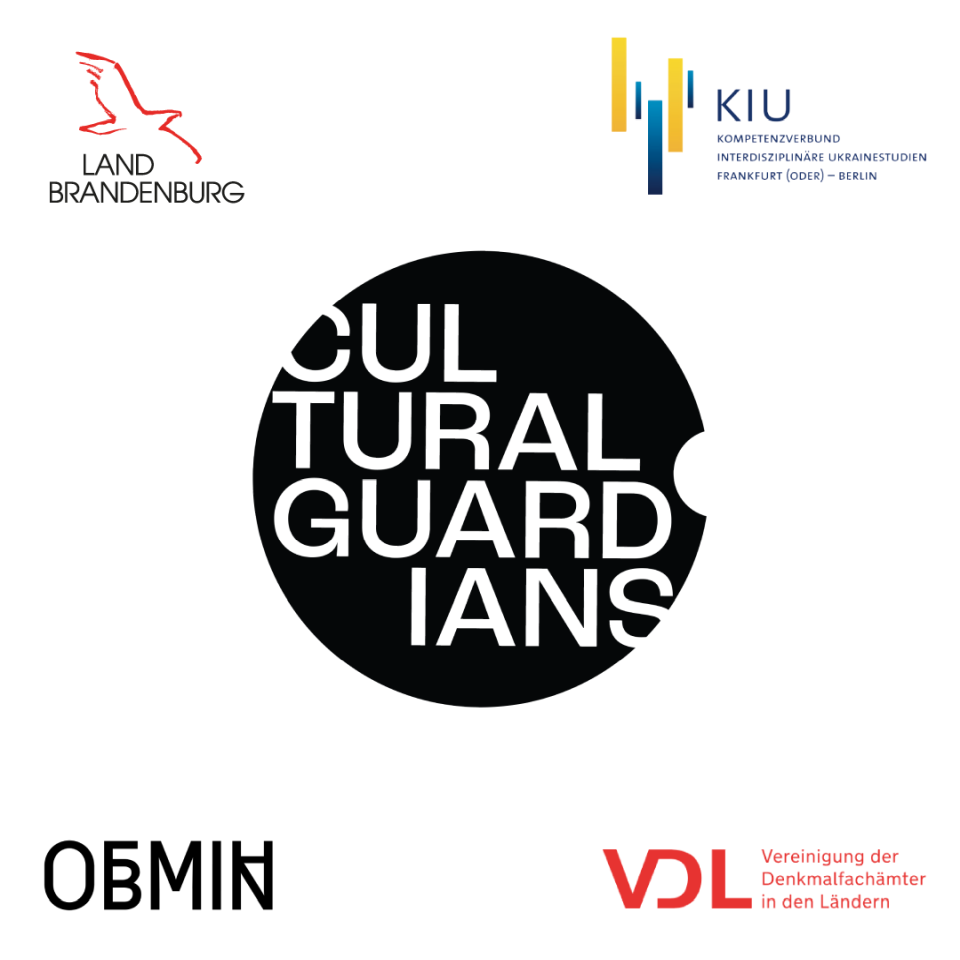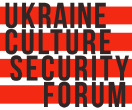Cultural Guardians: Protecting Cultural Heritage is Protecting the Future for Ukraine
CULTURAL GUARDIANS - summary of the project
September, 2025
Our pilot study tour started in Warsaw, Poland on 1st September and included four museums:
- Maria Skłodowska-Curie Museum (Muzeum Marii Skłodowskiej-Curie w A small but powerful space dedicated to women in science. We explored collection care, audience development, and even exchanged technical insights on labeling and object description.
- National Museum in Warsaw (Muzeum Narodowe w Warszawie) Guided by Apolonia Zygmunt, Director's Representative for Accessibility, we learned about accessibility testing assistive devices. We had a chance to see the Ancient Art and Faras Gallery and a behind-the-scenes look into the museumʼs photo studios.
- Łazienki Królewskie Royal Lazienki Discussions where focused on inventory systems and collection management, with a deep dive into the Spectrum and iArt Museum tools.
- Zachęta Narodowa Galeria Sztuki Zachęta National Gallery of Art- we ended the day with tours of three exhibitions — this time guided in Ukrainian — an important gesture of solidarity and inclusion.
In Łódź we visited an exhibition which shows how the museum works from the inside and had a tour with Natalia Słaboń, Jakub Gawkowski and Natalia Królikowska from Muzeum Sztuki w Łodzi. In Germany we were welcomed by KIU Competence Network Interdisciplinary Ukrainian Studies at Europa-Universität Viadrina in Frankfurt (Oder). We participated in the workshops with Prof. Dr. Paul Zalewski: "The Paulinenhof settlement – Frankfurt after World War I" and “Radical Reconstruction – Public Space after World War II.” We also strolled around the city and talked about its history and architecture.
We traveled to Neuzelle Abbey, where we toured the monastery, church, and storerooms — exploring questions of conservation and long-term heritage care. A highlight was the visit to the Heavenly Theatre Museum, home to a unique Baroque stage used to create large-scale biblical performances in the 18th century. Guided by Clara Roth-Winges, Dorothee Schmidt-Breitung, and Prof. Mechthild Noll-Minor, we discovered how these extraordinary pieces of cultural history have been preserved and reinterpreted for today.
Can culture be a weapon against the oppressor and a form of national security? This question shaped our discussions at the Polish Institute in Berlin (Polnisches Institut Berlin). We began the day at the Neue Nationalgalerie where curator Lisa Botti introduced the museumʼs mission and history, followed by inspiring exhibitions featuring Lygia Clark, Yoko Ono, Fujiko Nakaya, and Christoph Schlingensief. In the afternoon, at the Polish Institute in Berlin, we met with Katarzyna Sito, Anna Mituś, Kateryna Rietz-Rakul (Ukrainian Institut in Germany ), Katharina Göring (German Ministry of Foreign Affairs), and Thomas Drachenberg (VDL). Together, we reflected on the vital role of cultural exchange and heritage preservation — not only as a safeguard of the past, but as a source of identity, resilience, and strength for the present.
Our last day in Berlin was about accessibility, inclusion, and diversity in museums — exploring how institutions adapt their programs through focus groups, technology, and innovative solutions. First, we were welcomed by Silke Krummel and Kathleen Clancy from the Agency for International Museum Cooperation. The morning sessions opened with Birgit Tellmann (Bundeskunsthalle) sharing experience from the “Network Inclusion” projects, showing how partnerships can strengthen accessibility programs.
Then Oksana Zhmurko (Національний музей у Львові імені Андрея Шептицького / National Museum in Lviv named after Andrey Sheptytsky) shared the presentation on the program “The Inclusive Museum: Creating Space for Exchange and Participation”, which includes initiatives supporting the mental health of soldiers and their families. Kateryna Hryshchenko (Дніпропетровський національний історичний музей ім. Яворницького / Dmytro Yavornytsky National Historical Museum of Dnipro) spoke about the challenges Ukrainian institutions face, especially as the war brings a growing number of visitors and veterans living with war-related disabilities. The session closed with Stephanie Roth (Gedenkstätte Berlin-Hohenschönhausen) presenting the memorial site in a former Stasi remand prison for political detainees, where today former prisoners themselves work as guides.
We went to the Bauhaus-Archiv and discussed how design principles can help defend democracy against oppression with Lisa Rocke. At the end of the day we visited the Berlinische Galerie where Andreas Krüger introduced their wide-ranging accessibility program: people with disabilities work as guides, offering tours from their own perspective, making the experience deeply authentic. The museum also invests in advanced technological solutions for accessibility, which they constantly refine and improve.
It was an incredible week that showed how much we can learn from one another. We are deeply grateful to all the hosts and experts who welcomed us, and glad to have shared experiences, challenges, and ideas together, connecting across borders as museum professionals.
During the second week of study tours our participants from Ukraine stayed fo at various institutions in Germany and Poland:
Historical Complex of the National Museum in Lviv named after Andrey Sheptytsky to Museum Sztuki in Łódź
National Museum of the History of Ukraine in the Second World War. Memorial complex, Kyiv to Menschenrechtszentrum Cottbus MRZ
Kharkiv Historical Museum named after M.F. Sumtsov to Stadtmuseum Brandenburg an der Havel im Stadtmuseum
Dmytro Yavornytsky National Historical Museum of Dnipro to Stiftung Preußische Schlösser und Gärten in Berlin-Brandenburg, Potsdam
Ancient Chernihiv National Architectural and Historical Reserve to Kloster Stift Heiligengrabe
Volyn Regional Museum to Kloster Stift Neuzelle
National Museum of the History of Ukraine, Kyiv to Stiftung Fürst-Pückler-Museum Park und Schloss Branitz
During the visit, participants exchanged knowledge and expertise, studied public engagement and explored museum operations. They gained insight into the daily work of museums, including how they manage collections, organise exhibitions and engage with the public. The visits involved hands-on tasks such as assisting in the archives, organising information, working with photographs and helping with translations. Participants explored history and preservation. Participants studied the history of various sites, including palaces, monasteries, and former prisons, discovering how these institutions preserve their heritage and collections of historical artefacts.
List of Ukrainian museums:
Department of Ethnography and Folk Crafts of the Volyn Regional Museum, Lutsk
National Historical Museum of Dnipro
Lviv National Art Gallery
Kharkiv Historical Museum named after M.F. Sumtsov
National Museum of the History of Ukraine in the Second World War. Memorial complex, Kyiv
Ancient Chernihiv National Architectural and Historical Reserve
Historical Complex of the National museum in Lviv named after Andrey Sheptytsky National Museum of the History of Ukraine, Kyiv
List of participating institutions
OBMIN Foundation
KIU Competence Network for Interdisciplinary Ukraine Studies Frankfurt (Oder)-Berlin
Association of State Monument Authorities in Germany (VDL)
Agency for International Museum Cooperation, Berlin
Polish Institute in Berlin
Ukrainian Institute in Berlin
Embassy of Ukraine in Berlin
Berlinische Galerie, Berlin
Temporary Bauhaus-Archiv, Berlin
Stiftung Stift Neuzelle
Wüstenrot Foundation
Ministerium für Wissenschaft, Forschung und Kultur, German State of Brandenburg
Prince-Pückler-Museum Park and Palace Branitz Foundation Stadtmuseum Brandenburg an der Havel Human Rights Center Cottbus e.V.
Kloster Stift Heiligengrabe
Prussian Palaces and Gardens Foundation Berlin-Brandenburg
Maria Skłodowska-Curie Museum in Warsaw
National Museum in Warsaw
The Royal Łazienki Museum in Warsaw
Zachęta National Gallery in Warsaw
Muzeum Sztuki in Łódź
Cultural Guardians on social media:
![]()
![]()
![]()




